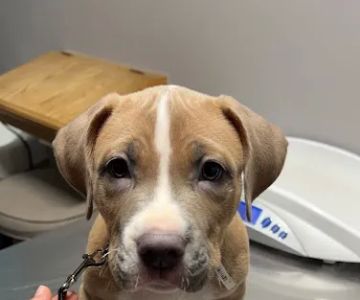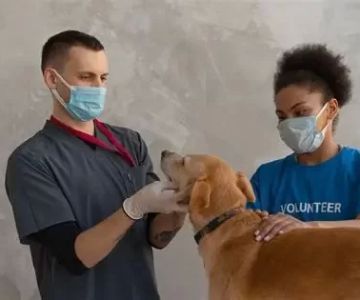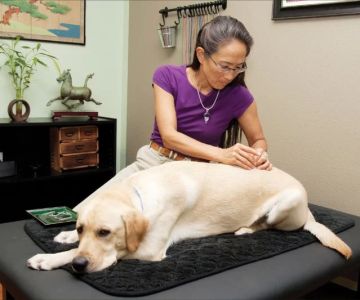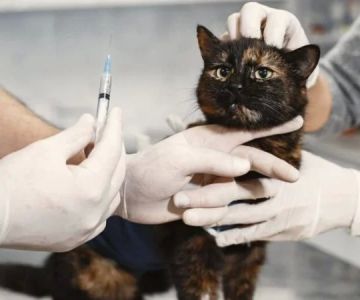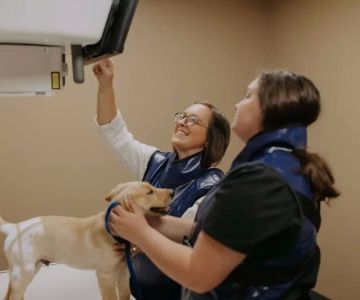1. Introduction: The Path to Becoming a Veterinarian
Becoming a veterinarian is a rewarding but challenging journey. If you're considering a career in veterinary medicine, you may be wondering, "What age do you become a veterinarian?" This is a common question for aspiring veterinarians, as the process of becoming a vet involves many years of education, training, and dedication. In this article, we’ll walk you through the typical age and timeline involved in becoming a veterinarian, along with the education and steps required to pursue this career.
Whether you’re just starting high school or already in college, understanding the path to becoming a veterinarian is crucial for planning your future. We’ll cover the various stages of education and experience required, helping you determine when you can expect to become a fully licensed veterinarian.
2. The Timeline of Becoming a Veterinarian
So, at what age do you become a veterinarian? While there is no exact age, the process typically takes between 8 to 12 years depending on the individual and their specific educational path. Below, we break down the steps in the timeline of becoming a veterinarian:
2.1 High School (Ages 14-18)
The first step in becoming a veterinarian is completing your high school education. Most students who want to pursue a veterinary career start preparing early by focusing on subjects like biology, chemistry, and math, which form the foundation for future veterinary studies. It’s also helpful to gain experience working with animals, whether through volunteering at animal shelters, shadowing veterinarians, or working at pet stores. This hands-on experience will give you valuable insight into animal care and help you decide if veterinary medicine is the right path for you.
2.2 Undergraduate Education (Ages 18-22)
Once you graduate from high school, the next step is obtaining a bachelor’s degree, which typically takes four years. While there is no specific major required for veterinary school, students typically pursue degrees in fields like biology, animal science, or pre-veterinary medicine. During this time, it’s important to maintain a strong GPA and gain more experience with animals, as veterinary schools are highly competitive. Most veterinary schools also require certain prerequisite courses, such as organic chemistry, physics, and biochemistry, so be sure to consult the requirements of your desired veterinary programs.
2.3 Veterinary School (Ages 22-26)
After completing your undergraduate degree, you’ll need to attend veterinary school, which typically lasts four years. Veterinary school is rigorous and involves a combination of classroom learning and clinical experience. During these years, you’ll study subjects such as anatomy, physiology, pharmacology, and pathology, as well as gain hands-on experience in diagnosing and treating animals. The age at which you enter veterinary school typically ranges from 22 to 26, depending on whether you take any gap years or additional time to complete your undergraduate degree.
2.4 Internship or Residency (Ages 26-30)
After graduating from veterinary school, many veterinarians choose to complete an internship or residency, especially if they want to specialize in a certain area of veterinary medicine (such as surgery, dentistry, or oncology). An internship typically lasts one year, while a residency can last between 2 to 4 years depending on the specialty. During this time, veterinarians gain additional hands-on experience and training in their chosen field. Some veterinarians also choose to work in general practice after graduating and forgo internships or residencies, but specialized training can provide greater career opportunities and higher earning potential.
3. Licensing and Becoming a Veterinarian
In most countries, becoming a licensed veterinarian requires passing exams and meeting state or national certification requirements. This is the final step in becoming a fully licensed veterinarian. The age at which veterinarians become licensed typically ranges from 26 to 30, depending on the length of their education and training. The process for licensing may include:
3.1 Passing the Veterinary Licensing Exam
To practice veterinary medicine legally, you must pass the licensing exam in your country or state. In the U.S., for example, you must pass the North American Veterinary Licensing Exam (NAVLE), which tests your knowledge and skills in veterinary medicine. This exam is typically taken after completing veterinary school, but before you can begin practicing independently. The exam includes both written and practical components to ensure that you have the knowledge and ability to provide high-quality care to animals.
3.2 Meeting State or National Requirements
In addition to passing the licensing exam, you may need to meet other state or national requirements depending on where you plan to practice. Some states or regions require additional exams, background checks, or continuing education in order to maintain your license. Be sure to research the specific requirements for the state or country where you plan to practice.
4. Career Outlook for Veterinarians
The veterinary profession is a rewarding and fulfilling career, with excellent job opportunities available for those who complete the necessary education and training. According to the U.S. Bureau of Labor Statistics, employment for veterinarians is expected to grow by 16% from 2019 to 2029, which is much faster than the average for all occupations. This growth is driven by increasing pet ownership, the need for animal care in agriculture, and the rising demand for veterinary specialists.
4.1 Job Opportunities and Specialization
Veterinarians can work in a variety of settings, including private practices, animal hospitals, research institutions, and wildlife conservation programs. With the rise in demand for specialized veterinary care, many veterinarians choose to focus on specific fields such as surgery, emergency care, or dermatology. Specializing in a certain area can increase job prospects and earning potential, allowing veterinarians to work with specific types of animals or treat specific conditions.
4.2 Earning Potential for Veterinarians
The salary for veterinarians varies depending on factors such as location, experience, and specialization. On average, veterinarians in the U.S. earn around $100,000 per year, with some specialists earning more. As with many professions, experience and specialization can significantly impact salary. Veterinarians who own their own practices or work in high-demand areas often earn higher incomes than those in general practice.
5. Conclusion: What Age Do You Become a Veterinarian?
In conclusion, becoming a veterinarian typically takes between 8 to 12 years, depending on the path you take and whether you specialize in a particular area. The typical age at which you become a fully licensed veterinarian is between 26 and 30, after completing undergraduate education, veterinary school, and any necessary internships or residencies. While the journey is long and challenging, it is also incredibly rewarding for those passionate about animal care and medicine.
If you’re ready to start your journey to becoming a veterinarian or want more information about veterinary school or career opportunities, visit Hidden Brook Veterinary for helpful resources and support on your path to success.

